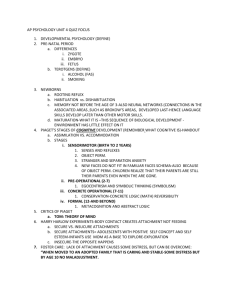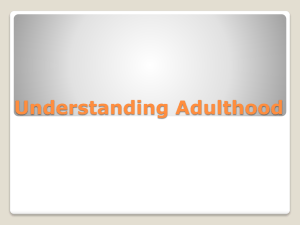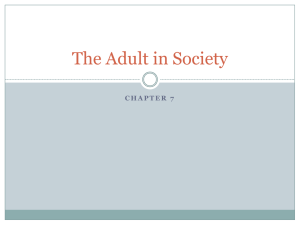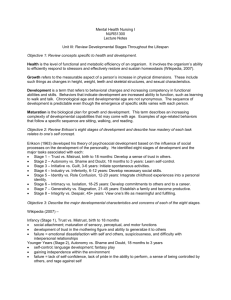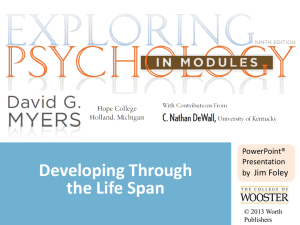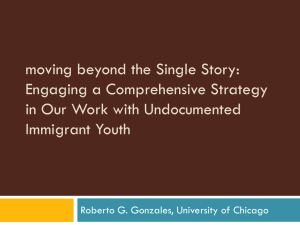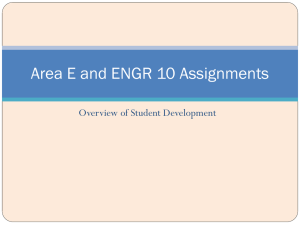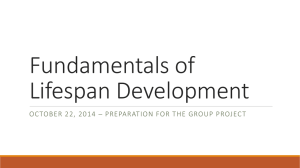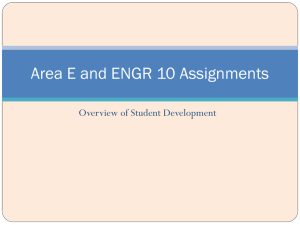Chapter8ppt - Lalor-HHD-LEC
advertisement
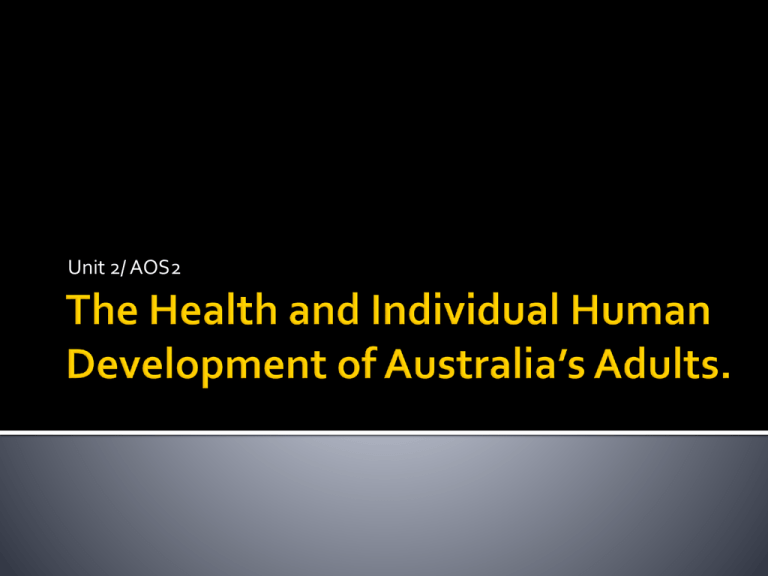
Unit 2/ AOS2 The different classifications of the stages of Adulthood. Characteristics of physical development during adulthood, including the physiological changes associated with ageing. The social, emotional and intellectual development associated with the stages of adulthood and ageing. The health status of Australia’s adults, including the similarities and differences between adult males and females. We will talk about physiological changes to the body in this chapter. Maximum adult height is reached. Cells continue to divide in the body. Peak bone mass is achieved at the start of adulthood. Loss of bone density begins in late 30’s- important to keep bone density. How do we do this? Acquiring new roles and responsibilities. List some examples of these: Gaining independence and developing identity. List some examples of how young adults may form new identities. Many young adults are staying at home longer. Why do you think this is the case? How might this affect social development? Read the case study on p246 and complete the Q’s. Self esteem and self concept are the 2 main parts of emotional development. Read p248 and list down some of the examples of emotional development in early adulthood. Learning the skills and knowledge of a chosen career. Gaining of wisdom. Read the case study on p249 and complete the Q’s. A gradual decline in many physiological functions may be evident from the age of 30. Bone loss accelerates in the 50s. Metabolic rate decreases. Fat deposits accumulate. Decreased need for energy. The cardiovascular system changes= a decrease in a person’s ability to cope with physical exertion, especially aerobic exercise. Heart muscle stiffens from tissue changes. The amount of blood that the heart can pump declines from 5 litres per minute at age 20 to about 3.5 litres per minute at age 70. The circulatory system becomes less efficient. Sense of hearing declines. Eyesight starts to deteriorate. Wrinkles start to appear due to loss of skin elasticity. Greying of hair due to loss of pigmentation. Women experience menopause. http://www.youtube.com/watch?v=s0nAC7ag 3XM http://www.youtube.com/watch?v=2_C2ZJd_ wuY Males experience a slight decrease in the production of sperm and testosterone. Some of the changes related to early adulthood apply..as people are getting married and moving out of the home later. Some adults become grandparents- how would this affect social dev’t? Self confidence and an acceptance of the person we are, tend to be common during this stage of Adulthood. Many challenges may need to be dealt with, including: possible unemployment. Accepting and adjusting to the physiological changes associated with ageing can be challenging. Especially with the pressures from society. DOVE AD? Knowledge is still being gained and the capacity to store knowledge and further build permanent memories is limitless. Ability to process information and solve problems generally improves. More ‘wisdom’ than the young. Important to keep your brain active. The efficiency and working of the body systems continue to decline, and the physiological changes of older adulthood become more visible. On poster paper draw or summarise the physiological changes that take place at this age! PUT A HEADING! Retirement can meancoping with a reduced income, deciding what to do with the extra time. Many adults enjoy the new found freedom. Read the poem on p256 as a class and answer Q’s. Adjusting to the changes of retirement can also have a negative effect. Loneliness, boredom. Adjusting to decreasing physical strength and health can also be a challenge. A decline in information processing ability. Decline in knowledge, memory and reaction times. “Use it or lose it” what do you think this means? Movie and analysis. Read p260 and complete Q1, p263. Complete Q2 and 3, p263. Read the case study on p262-263. Use the internet to answer the research Q’s and post your responses on your teachers wiki or the intranet. Choose another burden of disease for adults and research to create a poster. JESSICA MUSCATTTTTTTTTT EMILY MORAAAAAAAAALES Mockol bernaaa NIIIICCCOOOLLLLEEEEE
